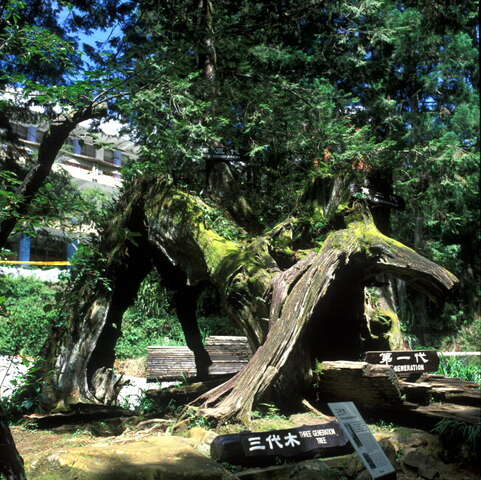Three-Generation Tree and Elephant Nose Tree Introduction
After the first generation of trees fell, the emergence of a hollow trunk allowed more light to shine through. Additionally, lying flat on the ground in a foggy climate, moss could grow on the tree's surface to retain moisture. These factors made it easier for seeds that landed on the dead cedar tree to germinate, giving birth to the second generation. The second generation grew atop the first generation, and after several hundred years, they too faced the fate of being cut down. The seeds of the third generation then sprouted from the second generation, creating a cycle of dying and reviving trees that formed the current landscape. Next to the three generations of trees, there is a felled tree stump known as the elephant trunk wood; from the viewpoint above the trail, it resembles a reclining elephant's trunk. In fact, these oddly-shaped tree stumps are scattered throughout the national forest recreation area. Today, when we describe the appearance of these cedar tree remains, we can only imagine how a hundred years ago, Alishan was filled with enormous original cedar forests, where these thousand-year-old cedars grew densely together, creating a spectacular scene!







































